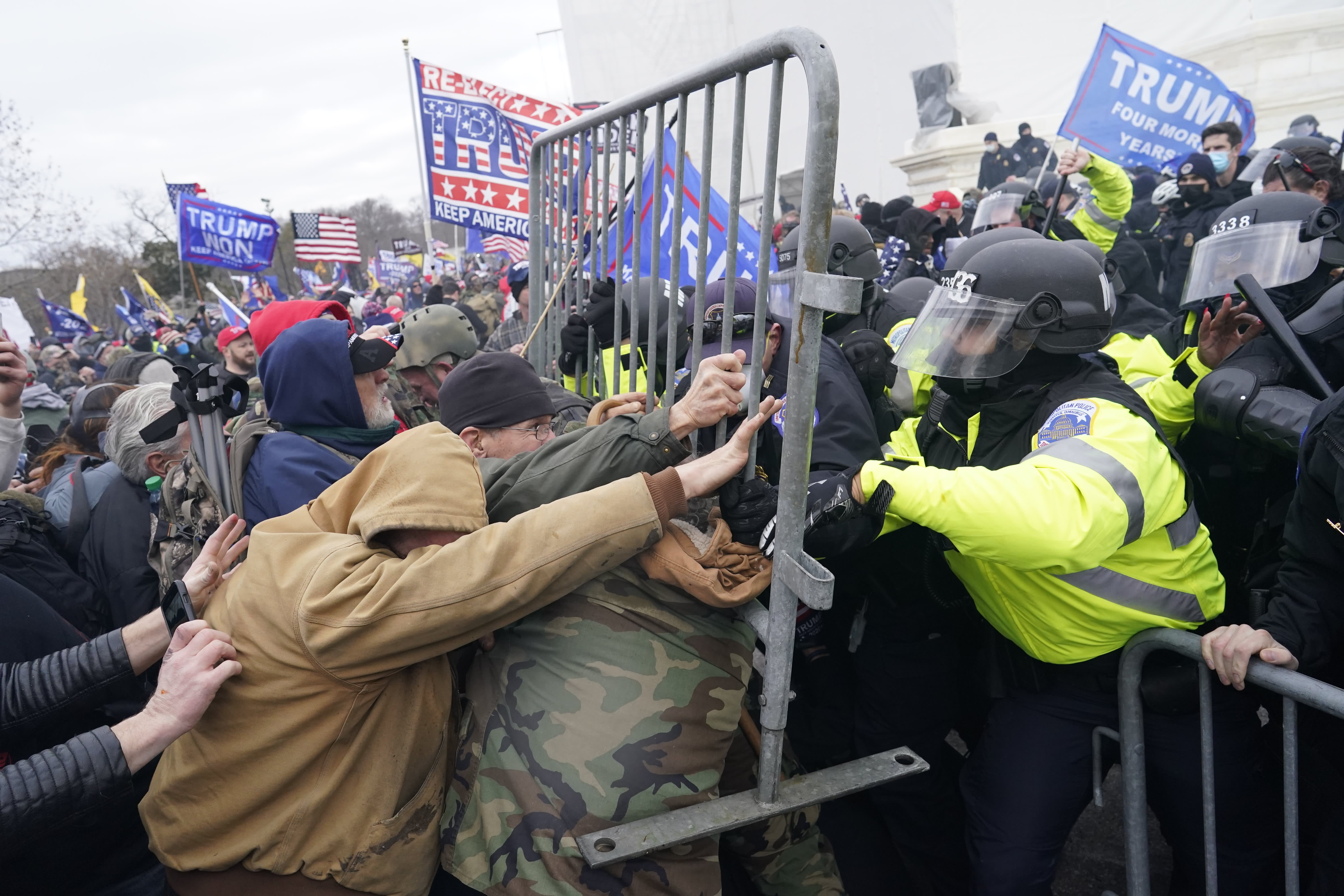
Protesters gather on the second day of pro-Trump events fueled by President Donald Trump’s persistent allegations of electoral fraud to reverse the results before Congress finalizes them in a joint session of the 117th Congress on Wednesday, January 6, 2021 in Washington. DC.
Kent Nishimura | Los Angeles Times | Getty Images
It was the last straw.
Following the takeover of the Capitol by a pro-Trump crowd, Twitter and Facebook pulled the plug on President Donald Trump’s accounts, suspending him from posting on fear that his posts would incite even more violence than we already saw in the halls of Congress.
But Wednesday wasn’t the first time Trump had violated social media policies that would result in a normal person being banned. Wednesday’s events were an inevitable conclusion thanks to the conspiracy-laden chatter in the dark corners of the internet that social media companies were allowed to freely distribute.
Over the course of Trump’s presidency, Facebook and Twitter rewritten their policies to give the president more runway to say dangerous things, under the guise that it was important for the public to know the thoughts of the world leaders. This policy was clearly designed around Trump’s online behavior and allowed him the freedom to spread messages of hatred, conspiracy and violence.
At best, those policies made possible Trump’s lies and calls for violence. At worst, they let those dangerous messages go viral and were believed by enough people who were willing to break open the doors of the Capitol.
For years, tech industry observers speculated what the last straw would be: What would Trump have to say or do to get tech platforms to restrict his social media posts?
Now we know.
They weren’t threats of nuclear war. They were not veiled threats to be shot at racial equality protesters last summer. It was not one of many lies about the results of our last election. Only after the president’s words resulted directly in a storming of the Capitol by his angry supporters did the tech platforms take real action and block Trump from posting, at least temporarily. Twitter went so far as to say that Trump would be permanently banned if he again violated the company’s security policy after his suspension. On Thursday, Facebook CEO Mark Zuckerberg announced that Trump’s suspension, which was originally set for 24 hours, will continue at least until the presidential transition on Jan. 20.
It’s worth a short history lesson on how we got here. It wasn’t until 2020, more than three years after Trump’s presidency, that Facebook and Twitter began to label its posts with factual links and security warnings. And that was especially fueled by Trump’s reports of the George Floyd protests and false claims about the legitimacy of post-in ballots in the months leading up to the November election. Trump was left unchecked on social media for the vast majority of his presidency, and was given a free hand to oxygenate the worse impulses of his followers.
Now there will be a settlement.
In the coming weeks, we’ll have to look at the role of social media in enabling the darkness we experienced on Wednesday. Facebook’s and Twitter’s approach to giving a world leader a free hand to say what he wants without consequences ignores the fact that a president’s words have great power and influence over the people who see them. Over the years, Trump’s social media habit has fueled the anger and resentment among his followers, eventually rising to the violence we saw on Capitol Hill.
However, for those looking closely, this was no surprise. The same conspiracies and lies that fueled the Mafia Wednesday started in the dark corners of the internet, made their way onto major social platforms and were echoed by mainstream conservative outlets. The conspiracies were funneled to a president already inclined to believe them and spread them across his social accounts, creating a loop of false and dangerous information that fed itself.
Those lies continued even after the riot. Almost as soon as the crowd entered the Capitol, conspiracy theorists online argued that the people who stormed the building were not Trump supporters, but liberal activists posing as Trump backers. Within hours, that message from Twitter reached the floor of the House of Representatives, when Representative Matt Gaetz, R-Fla., Made the same false claim in his comments objecting to the certification of President-elect Joe Biden. election. He backed up his claims by quoting reports from a fake facial recognition company claiming to have identified antifa members in the crowd.
That’s how fast the online conspiracy ecosystem works. The mob had barely entered the Capitol when the next lie began to take hold online. Within hours we had at least one elected representative who believed and repeated it. And you can be sure that it “was actually the antifa that stormed the Capitol” will take over the conservative media by the end of Thursday. And the president himself will certainly be willing to share those conspiracies via social media if he gets to post again.
It’s the same pattern we’ve seen over and over during Trump’s presidency. If anyone, especially those in Trump’s near orbit, says they are surprised at what happened on Wednesday, then they either didn’t pay attention or dismissed it all as unserious banter online.
But we found out on Wednesday that the online threats were serious and that online conspiracy theories were powered by the president. And they were made possible by the Wild West attitude of social media companies to let false information reach millions on their platforms and fuel the violence.